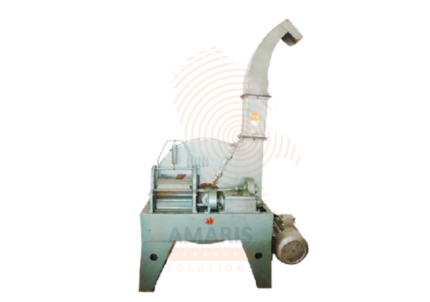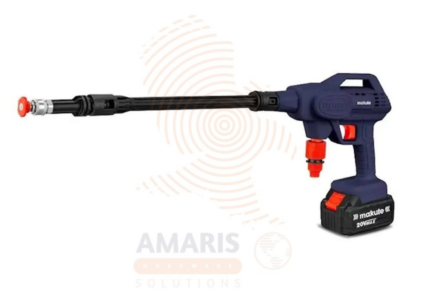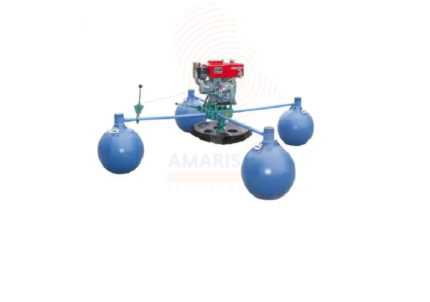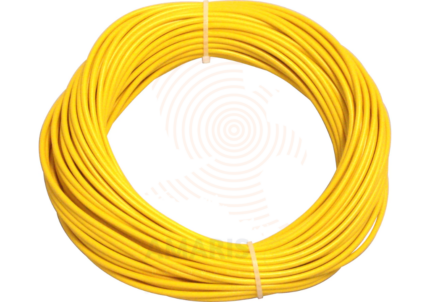Bush Cutter Blade
WhatsApp Order
A bush cutter blade is a specialized cutting component designed for use in a bush cutter or brush cutter machine. It is a robust and sharp-edged tool crafted to efficiently cut through dense vegetation, such as bushes, shrubs, tall grass, and small trees. The design of the bush cutter blade is tailored to provide effective and precise cutting in challenging outdoor conditions. These blades come in various shapes and configurations, allowing users to adapt to different types of vegetation and land management tasks. Bush cutter blades play a crucial role in vegetation control, land clearing, and maintenance activities across various industries and applications.
Description
Uses
- Brush and Undergrowth Clearing:
- Cutting through dense vegetation, including bushes, tall grass, and underbrush.
- Clearing areas with thick and overgrown vegetation that may be challenging for other tools.
- Small Tree and Sapling Removal:
- Efficiently cutting down small trees and saplings with a diameter suitable for the blade.
- Clearing areas where larger machinery may be impractical or inaccessible.
- Weed and Grass Trimming:
- Trimming weeds and grass in areas where precision and control are required.
- Maintaining a neat and manicured appearance in lawns, gardens, and landscapes.
- Field and Pasture Maintenance:
- Cutting and managing vegetation in agricultural fields or pastureland.
- Controlling the growth of unwanted plants to maintain optimal conditions for crops or livestock.
- Roadside and Trail Clearing:
- Clearing vegetation along roadsides and trails for improved visibility and safety.
- Creating pathways in natural environments for recreational use.
- Firebreak Creation:
- Establishing firebreaks by cutting down vegetation to prevent the spread of wildfires.
- Creating a defensible space around properties in wildfire-prone areas.
- Landscaping and Property Maintenance:
- Shaping and maintaining the appearance of landscapes and gardens.
- Trimming vegetation around structures, fences, and other landscape features.
- Invasive Species Control:
- Removing invasive plant species that threaten native flora.
- Managing vegetation in environmentally sensitive areas to control the spread of invasives.
- Construction Site Preparation:
- Clearing land for construction projects by cutting down vegetation.
- Creating a clean and accessible workspace for construction activities.
- Emergency and Disaster Response:
- Clearing debris and vegetation after storms, hurricanes, or other natural disasters.
- Facilitating access for emergency response teams in affected areas.
- Waste Management:
- Cutting and preparing green waste for disposal or recycling.
- Reducing vegetation into manageable pieces for composting or disposal.
SAFETY HANDLING PRECAUTIONS
Safety Precautions
- Read the Operator's Manual:
- Familiarize yourself with the manufacturer's instructions and guidelines provided in the operator's manual before using the bush cutter. This includes information on proper operation, maintenance, and safety precautions.
- Personal Protective Equipment (PPE):
- Wear appropriate personal protective equipment, including:
- Safety glasses or a face shield to protect your eyes from debris.
- Hearing protection to reduce noise exposure.
- Sturdy, non-slip footwear.
- Long pants and a long-sleeved shirt to protect against flying debris and contact with vegetation.
- Wear appropriate personal protective equipment, including:
- Gloves:
- Use heavy-duty gloves to protect your hands from sharp blades, debris, and vibrations.
- Safety Guards:
- Ensure that all safety guards and shields provided by the manufacturer are in place and properly secured. Do not remove or disable these safety features.
- Inspect the Equipment:
- Before each use, inspect the bush cutter, including the blade, for any signs of damage, wear, or malfunction. Replace or repair any damaged components before operation.
- Clear the Work Area:
- Remove obstacles, debris, and any potential tripping hazards from the work area.
- Ensure that bystanders, pets, and other individuals are at a safe distance from the cutting zone.
- Proper Grip and Stance:
- Maintain a firm grip on the bush cutter with both hands.
- Stand with your feet shoulder-width apart for stability.
- Keep a balanced stance to prevent loss of control.
- Watch Your Surroundings:
- Be aware of your surroundings and any potential hazards, such as uneven terrain, holes, or other obstacles.
- Stay vigilant for people or animals entering the work area unexpectedly.
- Avoid Overreaching:
- Operate the bush cutter within your comfortable reach to maintain control and balance.
- Proper Cutting Technique:
- Use the correct cutting technique, and avoid making contact with the ground or hard surfaces to prevent kickback.
- Keep the blade at a safe distance from your body.
- Engine Safety:
- Turn off the engine and wait for the blade to come to a complete stop before setting the bush cutter down or performing maintenance.
- Emergency Preparedness:
- Know the location of emergency shut-off switches and how to use them.
- Carry a first aid kit and know the basics of first aid in case of an injury.
Related products
Choper
A chopper is a robust handheld cutting tool designed primarily for chopping or splitting wood and other tough materials. It features a sharp, heavy blade fixed at the end of a long handle, allowing the user to deliver powerful, controlled chopping strokes. Choppers are widely used in agriculture, forestry, and construction for tasks like cutting branches, clearing brush, and chopping firewood. Its simple design and effective cutting ability make it a valuable tool for both professional workers and DIY enthusiasts.
Cordless Pressure Washer
A cordless pressure washer is a portable, battery-powered cleaning device that delivers pressurized water for high-efficiency cleaning without needing power outlets or fixed water sources. It features a rechargeable lithium-ion battery, compact pump, and interchangeable nozzles for adjustable spray patterns. Designed for mobility and ease of use, it can draw water from buckets or portable tanks, making it ideal for remote tasks, outdoor cleaning, and situations where conventional connections are unavailable.
Electric Brush Cutter
An electric brush cutter is a powered gardening tool designed for cutting and trimming dense vegetation, weeds, and overgrown areas. It is equipped with a motor that is powered by electricity, usually sourced from a power outlet or a rechargeable battery. The tool features a rotating cutting blade or a nylon string, commonly referred to as a trimmer line, that efficiently cuts through thick vegetation. Electric brush cutters are known for their ease of use, low noise levels compared to gas-powered alternatives, and their environmentally friendly operation. They are suitable for maintaining lawns, clearing brush, and tidying up areas where traditional lawnmowers may struggle to reach.
Fish Aerator
A fish aerator is a device designed to increase oxygen levels in water, essential for maintaining the health and survival of fish in aquaculture systems, ponds, tanks, and live fish transport. It works by agitating water or releasing air bubbles to promote gas exchange between air and water. Fish aerators are commonly used in fish farming, aquariums, and bait tanks to prevent oxygen depletion, especially in densely stocked or warm water conditions. They improve water quality, reduce fish stress, and promote better growth and survival rates.
Lopping Saw
A lopping saw is a specialized cutting tool designed for pruning and trimming tree branches, typically featuring a long, curved blade with large, sharp teeth. This tool is specifically crafted to make it easier to reach and cut through high or thick branches that may be challenging to access with standard pruning shears or a traditional saw. Lopping saws are commonly used in gardening, arboriculture, and forestry to facilitate efficient and controlled pruning of trees and shrubs.
Nylon Round Trimmer Line
The Nylon Round Trimmer Line is a flexible, durable cutting line used in grass trimmers and brush cutters for lawn maintenance and landscaping. Made from high-strength nylon material, it features a round cross-section that provides excellent wear resistance, smooth cutting performance, and minimal breakage. This type of line is ideal for light to moderate trimming tasks such as edging lawns, clearing grass around trees, fences, and garden beds. It fits most standard string trimmers and is easy to wind into spool heads. Its consistent diameter ensures even wear and effective vegetation cutting across a variety of conditions.
Nylon Square Trimmer Line
PRODUCT DESCRIPTION
A nylon square trimmer line is a type of cutting line used in trimmers and weed eaters for lawn and garden maintenance. It is typically made of nylon material and has a square cross-sectional shape, as opposed to a round or other geometric shape. The square design enhances cutting efficiency and durability, allowing the trimmer line to effectively cut through grass, weeds, and other vegetation. The choice of nylon as the material ensures flexibility, strength, and resistance to wear, making it suitable for various cutting tasks in landscaping and lawn care.
Telescopic Hedge Shear
A telescopic hedge shear is a gardening tool specifically designed for trimming and shaping hedges and bushes. It typically consists of two long, straight blades with serrated edges that are operated by handles at the end of long telescopic arms. The telescopic feature allows users to extend the reach of the shears, making it easier to trim tall or hard-to-reach areas of hedges without the need for a ladder. This tool is commonly used in landscaping and gardening to maintain the desired shape and size of hedges, promoting a neat and well-manicured appearance in outdoor spaces.


 Acrylic Sealants
Acrylic Sealants Construction Adhesives
Construction Adhesives Double-Sided Tape
Double-Sided Tape Duct Tape
Duct Tape Electrical Tape
Electrical Tape Epoxy & Resins
Epoxy & Resins Masking Tape
Masking Tape
 Automotive Wrenches & Socket Sets
Automotive Wrenches & Socket Sets Battery Chargers & Jump Starters
Battery Chargers & Jump Starters Car Jacks & Stands
Car Jacks & Stands Car Wash & Detailing Products
Car Wash & Detailing Products Diagnostic Tools
Diagnostic Tools Tire Inflators
Tire Inflators Vehicle Lighting
Vehicle Lighting Oil & Lubricants
Oil & Lubricants
 Adhesives & Sealants
Adhesives & Sealants Bricks & Blocks
Bricks & Blocks Cement & Concrete
Cement & Concrete Drywall & Plaster
Drywall & Plaster Flooring (Tiles, Wood, Laminate)
Flooring (Tiles, Wood, Laminate) Lumber & Plywood
Lumber & Plywood Paints, Primers & Coatings
Paints, Primers & Coatings Insulation Materials
Insulation Materials Roofing Materials
Roofing Materials
 Circuit Breakers
Circuit Breakers Electrical Cables & Wires
Electrical Cables & Wires Switches & Sockets
Switches & Sockets Fuses & Relays
Fuses & Relays Connectors & Terminals
Connectors & Terminals Electrical Boxes & Panels
Electrical Boxes & Panels Conduit & Fittings
Conduit & Fittings Lighting Fixtures & Bulbs
Lighting Fixtures & Bulbs Extension Cords & Power Strips
Extension Cords & Power Strips
 Anchors
Anchors Bolts
Bolts Clips & Clamps
Clips & Clamps Screws
Screws Nuts
Nuts Washers
Washers Rivets
Rivets Nails
Nails Threaded Rods
Threaded Rods
 Hammers
Hammers Measuring Tools (Tapes, Levels, Calipers)
Measuring Tools (Tapes, Levels, Calipers) Screwdrivers
Screwdrivers Pliers & Cutters
Pliers & Cutters Saws & Blades
Saws & Blades Chisels & Punches
Chisels & Punches Allen Keys & Hex Keys
Allen Keys & Hex Keys Ratchets & Socket Sets
Ratchets & Socket Sets Wrenches & Spanners
Wrenches & Spanners
 Power Tool Accessories (Blades, Bits, Discs)
Power Tool Accessories (Blades, Bits, Discs) Rotary Tools
Rotary Tools Saws (Circular, Jigsaw, Reciprocating)
Saws (Circular, Jigsaw, Reciprocating) Drills & Drivers
Drills & Drivers Grinders & Sanders
Grinders & Sanders Heat Guns
Heat Guns Nail Guns
Nail Guns Impact Wrenches
Impact Wrenches Batteries & Chargers
Batteries & Chargers
 Pipes & Fittings (PVC, Copper, PEX)
Pipes & Fittings (PVC, Copper, PEX) Plumbing Tools
Plumbing Tools Pumps & Motors
Pumps & Motors Sealants & Adhesives for Plumbing
Sealants & Adhesives for Plumbing Valves & Taps
Valves & Taps Water Heaters
Water Heaters Drainage Systems
Drainage Systems Faucets & Fixtures
Faucets & Fixtures Hoses & Tubing
Hoses & Tubing
 Hinges & Latches
Hinges & Latches Hooks & Brackets
Hooks & Brackets Window Hardware
Window Hardware Chains & Cables
Chains & Cables Casters & Wheels
Casters & Wheels Shelving & Storage Systems
Shelving & Storage Systems Door Handles & Locks
Door Handles & Locks Drawer Slides & Cabinet Hardware
Drawer Slides & Cabinet Hardware
 Personal Protective Equipment (PPE)
Personal Protective Equipment (PPE) Respirators & Masks
Respirators & Masks Safety Glasses
Safety Glasses Safes
Safes Security Cameras
Security Cameras Gloves
Gloves Helmets
Helmets Ear Protection
Ear Protection Fire Safety Equipment
Fire Safety Equipment Locks & Padlocks
Locks & Padlocks Motion Sensors & Alarms
Motion Sensors & Alarms
 Garden Fencing
Garden Fencing Garden Furniture Hardware
Garden Furniture Hardware Lawn Mowers
Lawn Mowers Trimmers & Edgers
Trimmers & Edgers Shovels & Spades
Shovels & Spades Rakes & Hoes
Rakes & Hoes Pruning Shears & Loppers
Pruning Shears & Loppers Watering Systems (Hoses, Sprinklers, Nozzles)
Watering Systems (Hoses, Sprinklers, Nozzles)
 Interior Paints
Interior Paints Paint Brushes & Rollers
Paint Brushes & Rollers Paint Strippers & Thinners
Paint Strippers & Thinners Paint Trays & Accessories
Paint Trays & Accessories Exterior Paints
Exterior Paints Spray Paints
Spray Paints Primers & Undercoats
Primers & Undercoats Varnishes & Stains
Varnishes & Stains
 Gaskets & Seals
Gaskets & Seals Hydraulic Fittings
Hydraulic Fittings Industrial Fasteners
Industrial Fasteners Industrial Hoses
Industrial Hoses Lubricants & Greases
Lubricants & Greases Metal Sheets & Bars
Metal Sheets & Bars Bearings & Bushings
Bearings & Bushings Belts & Pulleys
Belts & Pulleys
 HVAC Filters
HVAC Filters Insulation for HVAC
Insulation for HVAC Air Conditioners
Air Conditioners Refrigerants
Refrigerants Ventilation Ducts & Fittings
Ventilation Ducts & Fittings Thermostats & Controllers
Thermostats & Controllers Fans & Blowers
Fans & Blowers
 Pegboards & Hooks
Pegboards & Hooks Shelving Units
Shelving Units Storage Bins & Containers
Storage Bins & Containers Toolboxes & Tool Chests
Toolboxes & Tool Chests Workbenches
Workbenches Drawer Organizers
Drawer Organizers Labeling Supplies
Labeling Supplies
 Welding Accessories (Clamps, Brushes)
Welding Accessories (Clamps, Brushes) Welding Electrodes & Rods
Welding Electrodes & Rods Welding Helmets & Gloves
Welding Helmets & Gloves Welding Machines
Welding Machines Soldering Irons & Stations
Soldering Irons & Stations Flux & Solder Wire
Flux & Solder Wire
 Generator Accessories
Generator Accessories Inverters
Inverters Portable Generators
Portable Generators Power Inverters
Power Inverters Transfer Switches
Transfer Switches Diesel & Gasoline Generators
Diesel & Gasoline Generators
 Transport Equipment: Carts, Dollies, and Hand Trucks
Transport Equipment: Carts, Dollies, and Hand Trucks Storage Solutions: Pallets, Racks, and Containers
Storage Solutions: Pallets, Racks, and Containers Lifting Equipment: Hoists, Cranes, and Jacks
Lifting Equipment: Hoists, Cranes, and Jacks Conveyors and Accessories: Belts and Rollers
Conveyors and Accessories: Belts and Rollers








